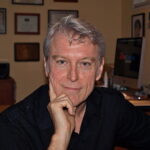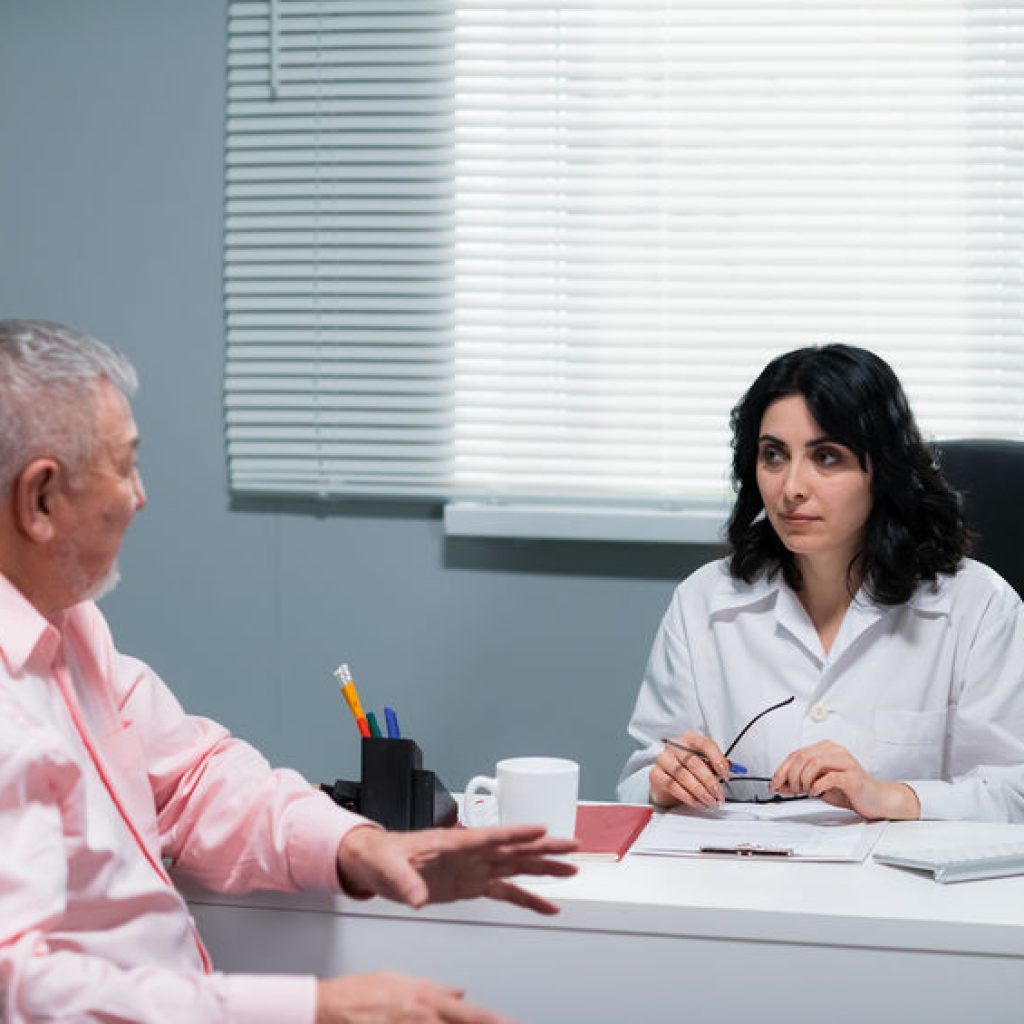JAMES SENSENIG, ND
RICK KIRSCHNER, ND, VNMI
This article joins a series of articles in NDNR that are based on transcripts of the Naturopathic Medicine Institute (NMI)’s Wednesday morning call-in program, The Vital Conversation. The program is hosted by senior Vitalists to enhance the ability of naturopathic physicians to practice as vitalist naturopathic doctors. This lightly edited transcript (by Emily Kane, ND) is the first part of a 2-part interview of Dr Rick Kirschner by Dr Jim Sensenig, the 2 recent past-presidents of the NMI.
Dr Sensenig: Dr Kirschner, could you give us a little background on how you got involved with naturopathic medicine?
Dr Kirschner: Sure. I’m a graduate of NCNM, which at the time was the only naturopathic medical school in the country. I lucked into naturopathic education when I was living in Israel back in the 1970s. The only job I could find in this village where I lived was helping out an 83-year-old British-trained naturopath. I was in my early 20s and she could run circles around me.
She grew all of her own medicine, and people lined up out the door for her treatments. For 6 months I worked at her side. I thought I had found gold! I thought, This is unbelievable – it’s so amazing! But when I got back to the United States, it didn’t appear that there was any way to get further education in herbal medicine. So, I thought that would just be a colorful chapter in my life.
Later, I was in a health food store in Cincinnati and ran into the little sister of a guy I played rock ‘n roll with in high school. She had an application under her arm for NCNM. I casually asked her what she was carrying, and she said she was applying to a naturopathic school in Oregon.
I had the classic “light bulb” moment – This is exactly what I’m supposed to do with my life. That meant going to school and getting my pre-med requirements, starting from scratch. I graduated in 1981.
In 1979, at the Portland campus, you were my academic dean, Dr Sensenig. One day you called me to your office, and said you needed me to represent the school on a TV program called Town Hall, a moderated forum.
I asked, “Why me?” And you said something to me that turned out to be the reason why a lot of things have happened: “Nobody else is available.”
I went on the show, and I have no idea what I said, because when they pointed the microphones and cameras at me, I kind of blanked out. But whatever I said, it got the attention of an MD in the audience, who then pursued a conversation with me for the next 3 weeks. Reluctantly, I finally took the call.
The guy introduced himself to me, and said, “There are 2 things you’re not learning in your program, and you need to know them to be a great doctor. You need to know how to listen, and you need to learn how to talk.”
Me being a flippant 20-something, I said, “Why?”
“Because most of your patients will get better if somebody just listens to them. Most doctors make their patients sick by the way they talk to them.”
Another light bulb went on in my mind. I decided to learn everything I could about how communication affects human health. That began a study on the side of my education at NCNM, with Rick Brinkman, who at the time was my closest friend. We started exploring the mind-body connection and the impact of language on our nervous system, and how we use language to create change.
Out of that experience, Rick and I put together a workshop at NCNM. We called it “The Magical Nature of Communication.” I remember hanging up little flyers in the school hallways. We were so inhibited about what we were trying to do that when we tried to price it, we said, “Oh, about $23″. Many people turned up for that thing, and after we did it, the people that didn’t attend asked if we would do it again.
Somebody brought a friend from Western States Chiropractic School who said, “Could you come teach it out here?” So we did.
Somebody brought a friend from the aerospace industry who said, “Would you come teach this to my managers?”
“No, no… This is about doctor/patient communication.”
“No, really it’s not. It’s about everybody’s communication.”
That opened the door to what became my speaking and training career that took me all over the world. It led me to doing 13 audio and video programs, and authoring and co-authoring 9 books. I’ve had a wonderful career.
People asked me, “Why would you just throw away your naturopathic education?”
“I didn’t throw it away,” I said. “I have a public practice, not a private practice.”
I see the work that I’m doing with groups based on this naturopathic mindset of treating the whole person. My approach to the whole person is the same as addressing 250 persons in a room.
One of the great developments within the last couple of years is the NMI coming along and resurrecting the vital core of our profession. I (along with a number of other people) was concerned that we were losing that vital core as our institution building went into hyperdrive.
The Body as a Metaphor
Dr Sensenig: Did the doctor who contacted you after the Town Hall stay in touch with you?
Dr Kirschner: Yes. At the time, Dr Bob was the head of the OB-GYN department at St Vincent’s Hospital.
He gave Rick and me books to read and audio tapes to listen to. He insisted that we get training in different things. We did several residential training programs in communication. I haven’t stayed in touch with Bob over the years; we kind of went our separate ways. But he definitely played a very pivotal role in my life, just as you did. Dr Bob had a really compelling story that I’d love to share here
I wanted to know what got him interested in mind-body and therapeutic communication. He was a very successful doctor, making a 6-figure income. He had a fancy car and a nice home in the hills of Portland.
He said, “My work as an OB/GYN surgeon changed women’s lives dramatically. One day I was going into surgery for a woman who had severe endometriosis. I was scrubbing up, and all of a sudden it dawned on me that I really knew nothing about this woman and what had brought her to this place in her life. Here I was about to completely change her life by performing a complete hysterectomy on her.”
He decided he couldn’t do the surgery without knowing something about her, so he stopped the surgery. When she came out of the anesthesia, he said to her, “I just have to ask you, if those drops of blood that you’re shedding were tears, what would you be crying about?” He said that the floodgates broke open; all this pain in her life came pouring out of her in tears. She sobbed so heavily that she could barely catch a breath. Bob decided that he needed to know more about the way we touch people’s lives through the things that we think and the things we say.
When I heard that story, I thought, Man, that’s amazing! As a result of that, I picked up a habit of always thinking of the body as a metaphor for something deeper. It ended up as sort of an instinct; so whenever people would tell me about a health problem, I would think, Wow, what’s that a metaphor for? What does that represent in their life?
I remember a case in clinic. At this point, I was toward the end of my third year. Rick and I practiced the things we were learning when we worked together on clinic shifts.
A woman came to the clinic who had what at the time was called a Class 4 Pap. They wanted to do a complete hysterectomy on her. They had already tried cauterizing her cervix. She came to the naturopathic clinic as a last resort, as so many people did in those days. Through the luck of the draw, she got Rick and me.
Remembering that example from Bob, I asked, “I’m curious. If this problem in your cervix represented something deeper in your life, what might it be? I would like to explore that with you.” She was open to that.
Rick and I had 4 one-hour conversations with her. We did vag-packs with her, and just kept after it. After 4 conversations, we did a Pap smear and it came back perfectly clear. We did so little.
What she revealed to us was sort of mind-blowing, and reinforced the lesson from Dr Bob. It turned out that she was in a really dysfunctional relationship with a guy. She wanted children and a family, and he saw her as kind of an object. He enjoyed their sex life, but she didn’t find it pleasurable at all; in fact, she felt kind of abused in the relationship.
The more she talked about it, the more obvious it became that her cervix was the meeting place for all of her unhappiness in that relationship. She had doggedly stayed in it for multiple years. Her body manifested the problem.
As soon as she owned it, I said, “What are you going to do about it?”
“I’ve got to get out of that relationship.”
That’s what changed. Then her body didn’t need to manifest her abusive relationship anymore.
The Immaterial Affects the Material
Dr Sensenig: That is interesting on many different levels. Lindlahr, Kent, Hahnemann – all of our predecessors – wrote extensively about this very thing: that there is that “something” – that simple substance, the vital force, the immaterial, nonmaterial part of us – that precedes all physical illness. A hundred years ago, they would refer to the “immaterial substance” when writing about things in the non-visible, non-material world. Talk about communication, words, and what words mean; the very word “immaterial,” in our time, has come to mean “of no consequence.” That which is immaterial is dismissed as being inconsequential. Yet, immaterial means simply “not material.”
So little time or effort is devoted to that part of patient care. When you look at Lindlahr’s Nature Cure, clearly one-quarter or so of the chapter headings in the book have to do with those in the immaterial realm, like prayer, the soul of man, the 3-fold constitution of man, magnetic healing, mental therapeutics, etc.
Those who bequeathed this profession to us, those whose lineage we claim to be perpetuating, were very well aware of the impact of what we now call mind-body on illness.
Dr Turska commented that the allopaths got it all wrong. They think medicine is a science, when it’s actually an art informed by science. He would say that they went off the deep end with the material aspects that are defined by their mechanistic paradigm, ignoring all the rest of it.
Dr Kirschner: We have witnessed over a century of propaganda about scientific medicine, claiming that if something is not quantifiable, is not something you can reduce, then it’s not valid. That’s insane because we see so little of what’s available in life, anyway. Our eyes can’t see the full range of the light spectrum; our ears can’t hear the full range of the sound spectrum; yet we are swimming in all of these energetic fields that we know so little about. For the scientific medical community to adopt the idea as a fact that everything that is not observable or directly knowable is somehow not valuable is just crazy! It means giving up access to deeper understandings of things.
I love exploring this realm of how we impact one another and how the words that we choose to represent our experiences, both to ourselves and to the people around us, have real, measurable consequences. I have found a lot of joy in my life by paying attention to life at the deeper level, to the immaterial.
Dr Sensenig: The idea of ignoring certain things or not brings us back to the concept of paradigm. If your paradigm only contains certain ways of seeing things, even though those other phenomena are available, real, and can be sensed – and I would argue are measurable in some ways – you’ll dismiss those other phenomena because they don’t fit your materialistic paradigm.
But recently, the scientific, materialistic, reductionistic, allopathic sciences have started exploring much of what we’re talking about. Now the “science” is saying that there’s something to these non-material forces influencing health and disease.
Bruce Lipton, the eminent cell biologist who wrote The Biology of Belief, has changed the way many people think about cells, cell communication, and the driving force of a cell. One of the things he points out, with research to back it up, is that the cell with its DNA is not a self-contained unit driven by the DNA as the “brains” of the cell.
Conventional wisdom holds that the DNA is the end-all and be-all; all the information that moves the cell and instructs the physical body in how to operate and how to grow and how to take shape – it’s all contained in the DNA.
What Lipton shows conclusively is that this fixed idea of the nucleus being the “brain” of the cell is upside down. The cell and all of its organelles and parts, including the DNA, are responding to the environment in which the cell finds itself. Not the other way around. All of the material is affected by all of the immaterial.
He even talks about the cell wall having receptors for other molecules. There are receptors for temperature, movement, and light, and the presence of food or danger nearby. But there are also receptors for vibration, which I take to mean thought.
Lindlahr talks about that as well, in great detail. Every thought we have has a corresponding effect on our cells.
You have spent your career observing how what we say and think influences what happens to us. When you were practicing, were there other examples – like the woman you mentioned with the Pap smear – of a patient’s situation changing by helping them look at it more closely or to think about it differently?
When Verbs are Turned into Nouns
Dr Kirschner: Definitely. I must say, even though I haven’t officially been in practice for a lot of years, I’ve continued to work with all sorts of people because I enjoy learning and the experience of exploring with people.
Here’s a very simple case… Along the way, I learned about a process in communication called nominalization. That’s where you turn a process into a thing, like a verb into a noun. We use words that constantly reflect this.
We say, “I have this frustration,” or “I have this difficulty.” What exactly is a frustration? Is that a thing? Can you put it in a wheelbarrow? No, you can’t. So what is that?
“Frustration” is from the verb “to be frustrated.” That’s an activity, a process. So when people talk about a process as a frozen thing, it means they’re carrying it around with them. When people say, “I have this frustration right now,” or “I have this difficulty,” it means this frozen process has become a noun in their life. It’s a thing that they carry.
We can often help someone by simply de-nominalizing their word. A guy comes into the clinic and says, “I’ve been diagnosed with essential hypertension. I remember thinking about that word “essential” as applied to hypertension. It sounds like you have to have it if it’s essential! Also, the word “hypertension” is a nominalization. It’s a frozen verb because it means to be hyper-tense.
I asked him, “What are you hypertensing about?” I turned it back into a verb. All of a sudden, the guy starts talking about things. I just listened carefully. I took his blood pressure at the end of the session and it was completely normal. His “essential” hypertension ceased to be essential, and he ceased being hypertensive. That’s just 1 simple example of the power of words.
I also learned that you can talk to your body parts. You can actually have a conversation with them, and they can respond to you because they’re alive and vibrant and also engaged in cellular messaging.
I remember a kid who was constantly wetting the bed. So the parent said to the kid one night, “Let’s talk to your bladder about why it’s wetting the bed.” The kid, being a kid, says, “Okay,” because kids don’t have the paradigm blindness; they’re still open to possibility.
So the kid says, “What do I do?”
The parent says, “Ask your bladder what it’s doing. Then just pay attention to any signal or any kind of message to you.”
So the kid closes her eyes and asks her bladder, “What are you doing this for?” All of a sudden, she opened her eyes and said to her parent, “I want more time with you at nighttime. You put me to bed and then leave the room. I want more time with you, so my bladder is making you spend more time with me.”
That’s from a little 5-year-old kid! Then the parent said, “Well, ask your bladder how much more time it would need so it can quit wetting the bed at night.”
The kid asks the bladder, and the bladder comes back and apparently says, “Two more stories. Tell me 2 more stories when you’re tucking me in.” That was the end of the bedwetting.
I just love that kind of stuff, and I’ve witnessed it a lot. As I matured in my ability to draw people out, I learned that the setup for having these kinds of conversations with grownups has to be done carefully. We all have paradigm blindness after a certain age. When you’re working with people who are in pain, or who are afraid, their focus narrows even more; it takes even more information away from them.
I never tell people that we’re going to find out what this is doing for you and find a better way, because that’s a promise that I might not be able to keep. Instead, I say, “I don’t know if this represents something in your life or not; but if it does, let’s find out.”
My experience is that when I make that offer to people, they become as curious as I am about it. Then we are able to explore these kinds of things and find change.
This column, based on the Vital Conversations of the Naturopathic Medicine Institute, will continue in next month’s NDNR.

James Sensenig, ND was a 1978 graduate of NCNM in Portland, OR. For over 40 years he maintained an eclectic practice in Hamden, CT. Over the years, Dr Sensenig held prominent positions in the various naturopathic colleges and the AANP. A champion of classical naturopathic medicine, Dr Sensenig received an Honorary Doctor of Naturopathic Philosophy degree from CCNM, and received numerous awards for his dedication to teaching the principles of naturopathic medicine.

Rick Kirschner, ND, VNMI is a best-selling author and coauthor of numerous books and multimedia programs. A 1981 graduate of NCNM, Dr Kirschner is a naturopathic physician, a senior vitalist, and past-president of the NMI, a long-time faculty member with the Institute for Management Studies, and a thought leader with Athena Interactive. In 2015, he produced and directed his documentary film, “How Healthcare Became Sickcare: The True History of Medicine, available for viewing through NMI. Dr Kirschner has delivered his expertise in thousands of radio and television appearances, interviews, newspaper and magazine articles, including CNBC, CBC, FOX, the Wall Street Journal, and USA Today.





